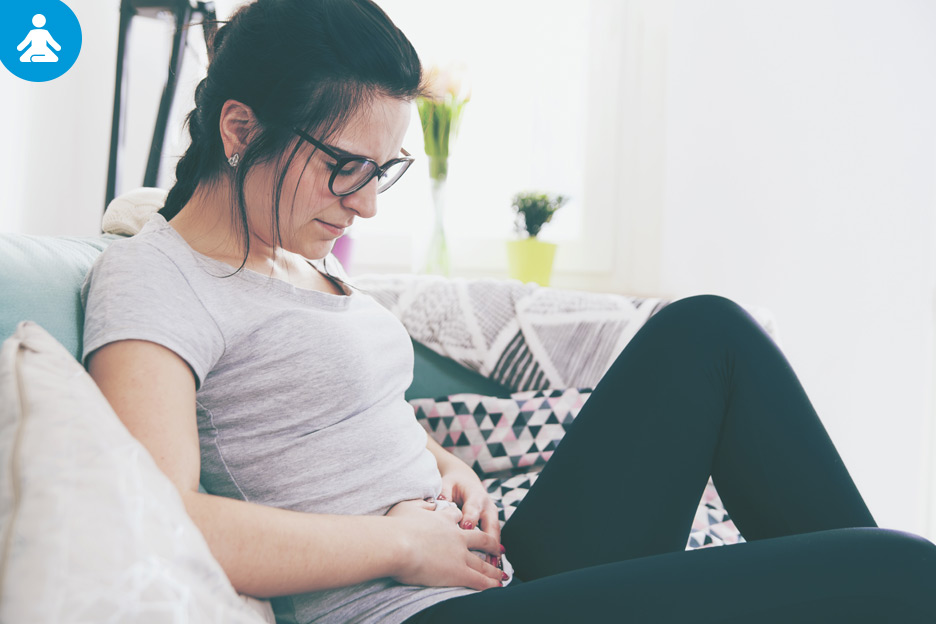Do you dread getting your period every month because of the pain it causes? You may not have tried everything to remedy the situation. Take control of menstrual cramps so that they don’t make those few days of the month unbearable!

A “necessary” affliction?
The illustrious painter Pierre-Auguste Renoir once said “the pain passes, but the beauty remains.” Although he was referring to the difficulties he was having painting because of health problems, we can all agree that this quote could definitely apply to women. For those who struggle with menstrual cramps, it is true that pain does eventually go away, but only to return the following month.
The medical term used for severe menstrual pain is dysmenorrhea. This condition affects a large number of girls and women during their menstrual period; indeed, over 50% of them suffer from it, which is quite significant. Although they are mild to moderate most of the time, cramps can be severe for some women, leading to a lower quality of life and interfering with daily activities (forced rest, absenteeism, etc.).
Fortunately, there are ways to reduce the intensity of menstrual pain, as well as its impact.
Medically speaking
Dysmenorrhea (also known as algomenorrhea) refers to lower abdominal (lower stomach) or lumbar (lower back) pain that occurs during the first days of the menstrual period. It mostly affects women in their twenties and can fade away with age and childbirth.
Other symptoms can also appear with cramps, such as:
- headache;
- fatigue or weakness;
- nausea;
- vomiting;
- diarrhea.
Primary dysmenorrhea is the most common type. It is associated with the body’s release of substances, known as prostaglandins, during the menstrual period. They provoke uterine contractions and facilitate the expulsion of blood from the uterus; those are the contractions that cause cramps. Less often, menstrual pain can be caused by an illness or disease, which is then referred to as secondary dysmenorrhea. This type appears later, usually in women who never previously experienced dysmenorrhea. It can be caused, for example, by an anatomical defect of the uterus, by endometritis (inflammation of the endometrium), by a cyst, etc. This type of dysmenorrhea usually requires the patient to be closely followed by a doctor.
How to alleviate cramps
You can try several methods to alleviate menstrual pain. Act as soon as the symptoms appear so that treatment can be as effective as possible.
Here are a few that could help:
- applying heat (hot-water bottle) on the abdomen or taking a warm bath;
- stomach massage;
- relaxation techniques (meditation, yoga, etc.);
- exercise and stretching;
- rest and restorative sleep.
Using medication
Some types of over-the-counter medication can provide relief for cramps. The first choice is a non-steroidal anti-inflammatory (NSAID), such as ibuprofen, which prevents the formation of pain-causing prostaglandins. A doctor can also prescribe such drugs. Other painkillers sold over the counter can also be of invaluable help, but since they might not be suited for everyone, it is always best to consult your pharmacist before selecting one.
To be effective, treatment must begin as soon as possible, i.e. usually within 24 hours before menstruation, and should be continued until about the third day of the period. The NSAID must be taken on a regular basis, not only when needed, to maintain a low level of prostaglandins. To minimize stomach irritation, the NSAID must be taken with milk or food.
Taking a hormonal contraceptive on a regular basis has also proven to be an effective way, in some cases, to reduce menstrual cramps. Because it stops ovulation, the body produces less prostaglandin, thus causing less abdominal cramps. Discuss it with your doctor.
When to see a doctor
You should see a doctor when:
- you get no relief from over-the-counter pain medication, including NSAIDs;
- pain appears in adulthood or worsens;
- painful cramps last several days before and after your period;
- you are experiencing the following symptoms: fever, thick and yellowish vaginal discharge, bleeding between periods and abnormally heavy period.
Menstrual periods are a normal aspect of a woman’s life. However, the pain that can come with periods doesn’t have to be a part of it. Several options are available to you to reduce or eliminate cramps, allowing you to love life no matter what the calendar says. It’s up to you to take charge to prevent your period from becoming a source of apprehension and to make life enjoyable every day of the month.
